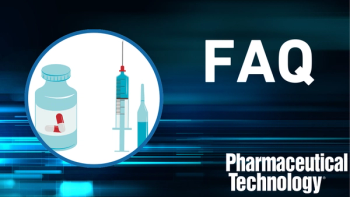
The Story of Nitrosamines
This review of the nitrosamines contamination problem in pharmaceuticals takes a look at how the crisis started and developed.
Nitrosamines occurring in pharmaceuticals became a developing problem in 2018, and regulatory agencies have been working with pharmaceutical companies since to mitigate the risk of these cancer-causing chemicals in drug products. Over the years, Pharmaceutical Technology® has covered the issue through news reports,
Click the above audio summary to learn about how the nitrosamines situation began and is continuing. And check out the video summary below.
Editor’s Note: This media was created using NotebookLM using articles found on PharmTech.com. Please see below list of references. AI-generated content may not be correct.
The graphic below breaks down some of the basics involved and what manufacturers should look out for.
Video summary
The discovery of nitrosamine impurities in pharmaceutical drugs, beginning in 2018, has prompted extensive regulatory action and industry-wide changes to ensure patient safety (1,2). The issue first came to light when N-nitrosodimethylamine (NDMA), a probable human carcinogen, was found in valsartan, an angiotensin receptor blocker (ARB), from a Chinese active pharmaceutical ingredient (API) manufacturer, Zhejiang Huahai Pharmaceutical Company (1, 3). This led to widespread recalls of sartan-based medicines (1).
Investigations soon revealed other nitrosamines, like N-nitrosodiethylamine (NDEA), in different sartan drugs, including losartan and irbesartan (1,4). The contamination was traced to specific manufacturing processes, particularly those involving certain solvents, reagents, and recycled materials (5, 6,7). The problem was not isolated to sartans; NDMA was later found in other widely used drugs such as ranitidine (Zantac), metformin, and pioglitazone, triggering further recalls and investigations (3,9). One study suggested the ranitidine molecule itself might be inherently unstable, capable of forming NDMA under conditions mimicking the human stomach (9).
In response, global regulators, including the US Food and Drug Administration (FDA) and the European Medicines Agency (EMA), have issued comprehensive guidance (10, 11). They now require pharmaceutical companies to conduct rigorous risk assessments for all chemically synthesized APIs to identify and mitigate nitrosamine risks (3, 10, 7). Both agencies have established acceptable daily intake limits for various nitrosamines and mandated confirmatory testing if a risk is identified (3, 12). The FDA has also developed advanced analytical methods, such as liquid chromatography-mass spectrometry (LC-MS), to detect trace levels of these impurities and avoid false positives that could occur with older testing protocols (1, 9, 13). This ongoing challenge has underscored the critical need for continuous safety surveillance and robust quality control throughout the pharmaceutical supply chain (3, 14).
Editor’s Note: This summary was created with NotebookLM using articles found on PharmTech.com. AI-generated content may not be correct.
References
1. Shanley, A.
2. James, A.
3. Thomas, F.
4. PharmTech Editors.
5. PharmTech Editors. FDA Gives Update on NDMA Investigation.
6. Shanley, A.
7. Milmo, S.
8. Mirasol, F.
9. Shanley, A.
10. PharmTech Editors.
11. PharmTech Editors.
12. Snow, S. and Panesar, N.
13. Bhalgat, M.
14. Haigney, S.
Additional references
• Angrish, P. and Mani, C.
• Curran, T. and Bercu, J. P. (2021, March 15).
• Haigney, S.
• Haigney, S.
• Haigney, S.
• Haigney, S.
• Husni, D. G.
• PharmTech Editors.
• PharmTech Editors
• PharmTech Editors.
• PharmTech Editors.
• PharmTech Editors.
• PharmTech Editors.
• PharmTech Editors.
• PharmTech Editors.
• Srinivasan, A.
• Srinivasan, A. and Lambert, C.
Newsletter
Get the essential updates shaping the future of pharma manufacturing and compliance—subscribe today to Pharmaceutical Technology and never miss a breakthrough.





